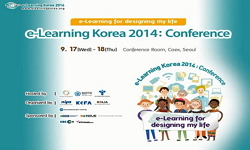Objectives: Work related Musculoskeletal disorders (WMSD) is one of the most important problem in occupational health system of Korea and Japan, where the OHS system developed in similar socio-cultural environment. This study compared WMSD in Korea an...
http://chineseinput.net/에서 pinyin(병음)방식으로 중국어를 변환할 수 있습니다.
변환된 중국어를 복사하여 사용하시면 됩니다.
- 中文 을 입력하시려면 zhongwen을 입력하시고 space를누르시면됩니다.
- 北京 을 입력하시려면 beijing을 입력하시고 space를 누르시면 됩니다.
https://www.riss.kr/link?id=A101744949
-
저자
Eun-A Kim ; Minori Nakata (Kanazawa Medical University)

- 발행기관
- 학술지명
- 권호사항
-
발행연도
2014
-
작성언어
English
- 주제어
-
등재정보
KCI등재후보
-
자료형태
학술저널
-
수록면
38-44(7쪽)
- DOI식별코드
- 제공처
-
0
상세조회 -
0
다운로드
부가정보
다국어 초록 (Multilingual Abstract)
Methods: Scientific articles, government reports, and related official and non-official statistics on WMSD since the 1960s in Japan and Korea were reviewed.
Results: The historical background and basic structure of the compensation system in Korea and Japan largely overlapped. The issuing of WMSD in both countries appeared as upper limb disorder (ULD), named occupational cervicobrachial diseases (OCD) in Japan, and neck-shoulder-arm syndrome (NSA) 30 years later in Korea, following the change from an industrial structure to automated office work. Both countries developed manuals for diagnosis, guidelines for workplace management, and prevention policies. At present, compensation cases per covered insurers for WMSD are higher in Korea than in Japan, due to the social welfare system and cultural environment. Prevention policies in Korea are enforced more strongly with punitive measures than in Japan. In contrast, the Japanese system requires autonomous effort toward risk control and management, focusing on specific risky processes.
Conclusions: WMSD in Korea and Japan have a similar history of identification and compensation structure, yet different compensation proportions per covered insurer and prevention policies. Follow-up study with international cooperation is necessary to improve both systems.
Objectives: Work related Musculoskeletal disorders (WMSD) is one of the most important problem in occupational health system of Korea and Japan, where the OHS system developed in similar socio-cultural environment. This study compared WMSD in Korea and Japan to review similarities and differences in their historical background, and development of prevention policies.
Methods: Scientific articles, government reports, and related official and non-official statistics on WMSD since the 1960s in Japan and Korea were reviewed.
Results: The historical background and basic structure of the compensation system in Korea and Japan largely overlapped. The issuing of WMSD in both countries appeared as upper limb disorder (ULD), named occupational cervicobrachial diseases (OCD) in Japan, and neck-shoulder-arm syndrome (NSA) 30 years later in Korea, following the change from an industrial structure to automated office work. Both countries developed manuals for diagnosis, guidelines for workplace management, and prevention policies. At present, compensation cases per covered insurers for WMSD are higher in Korea than in Japan, due to the social welfare system and cultural environment. Prevention policies in Korea are enforced more strongly with punitive measures than in Japan. In contrast, the Japanese system requires autonomous effort toward risk control and management, focusing on specific risky processes.
Conclusions: WMSD in Korea and Japan have a similar history of identification and compensation structure, yet different compensation proportions per covered insurer and prevention policies. Follow-up study with international cooperation is necessary to improve both systems.
목차 (Table of Contents)
- Abstract
- Introduction
- Materials and methods
- Results
- Discussion
- Abstract
- Introduction
- Materials and methods
- Results
- Discussion
- Conclusion
- References
동일학술지(권/호) 다른 논문
-
A Case of Obstructive Sleep Apnea and Assessments of Fitness for Work
- 대한직업환경의학회
- Sukwoo Hong
- 2014
- KCI등재후보
-
Estimated rate of agricultural injury
- 대한직업환경의학회
- Hyeseon Chae
- 2014
- KCI등재후보
-
Pulmonary function decline in firefighters and non-firefighters in South Korea
- 대한직업환경의학회
- Ju-Hwan Choi
- 2014
- KCI등재후보
-
Very Long (> 48 hours) Shifts and Cardiovascular Strain in Firefighters
- 대한직업환경의학회
- BongKyoo Choi
- 2014
- KCI등재후보





 DBpia
DBpia






